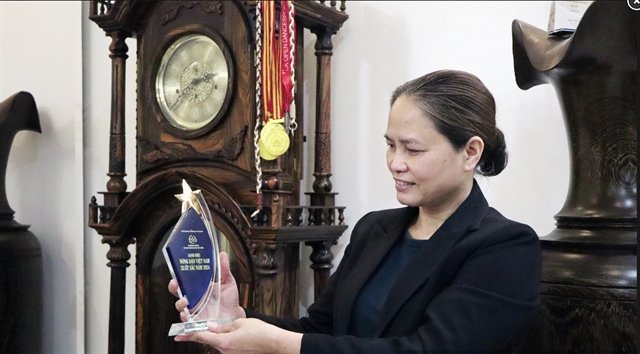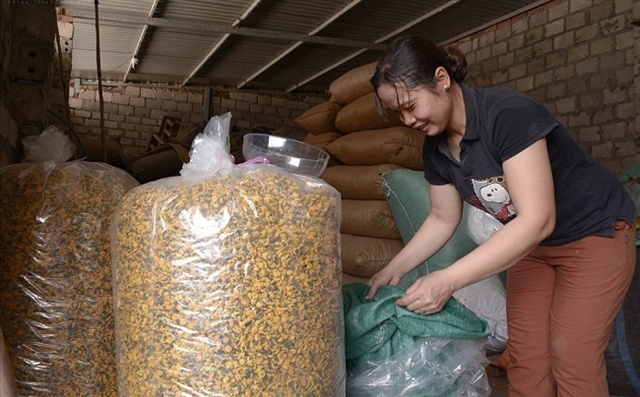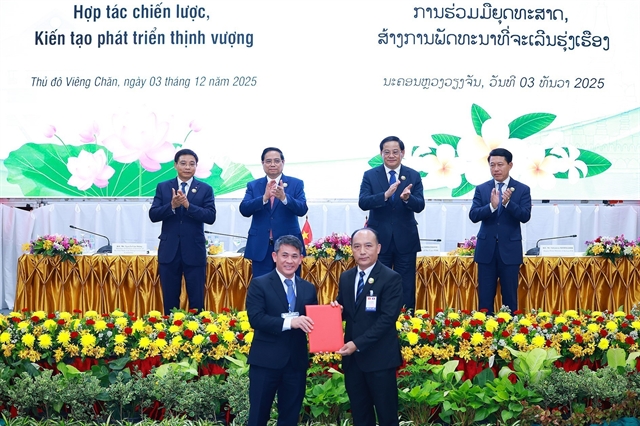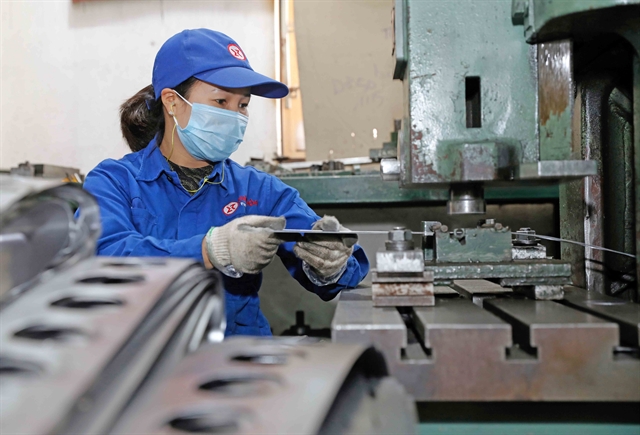 Society
Society


|
| Đỗ Thị Hoa, director of the Hoa Thiên Phú General Production and Service Co-operative. Photo danviet.vn |
HƯNG YÊN – A farmer in Hưng Yên Province earns thousands of US dollars a year from growing tiny flowers that bloom rapidly and are used as a valuable medicinal herb.
She is Đỗ Thị Hoa, director of the Hoa Thiên Phú General Production and Service Co-operative in Nghĩa Trai Village, Tân Quang Commune of Văn Lâm District. She cultivates 40ha of cúc chi (Chrysanthemum indicum) flowers.
Nghĩa Trai Village in Tân Quang Commune is known as the 'medicinal herb village', a traditional medicine village with a history spanning hundreds of years.

|
| A field of cúc chi flowers in Nghĩa Trai Village. Photo danviet.vn |
Despite many ups and downs, the craft of cultivating and processing medicinal herbs in Nghĩa Trai Village continues to be passed down through generations, providing employment for hundreds of households.
Like many farmers born and raised in Nghĩa Trai Village, Hoa has been familiar with medicinal plants since childhood.
Initially, she became accustomed to the scent of herbal medicine and memorised plant names.
Over time, her interest grew into a deep passion, and she became determined to promote the Nghĩa Trai medicinal brand to a wider audience.
Starting with small-scale trading, Hoa and several households in Nghĩa Trai Village established the Hoa Thiên Phú General Production and Service Cooperative in 2017.
Today, the co-operative has nearly 20 members and over 40ha of production land.
Reflecting on her journey, Hoa told danviet.vn: "After 20 years in the medicinal herb industry, the more I work, the more I love and appreciate this profession.
“Our knowledge of cultivating and processing medicinal herbs has been accumulated over many generations,” Hoa said.
“In the past, my family faced financial difficulties, and I could not pursue higher education. What I have today is thanks to learning from that accumulated knowledge," she said.
The model of cultivating, purchasing and processing medicinal herbs —mainly cúc chi flowers — generates billions of đồng in revenue for the Hoa Thiên Phú Co-operative.
Hoa's own business earns VNĐ2 billion (US$80,000) per year, with net profits of VNĐ200–300 million ($8,000-12,000) after expenses.
Tiny but valuable flowers

|
| Harvesting the valuable flowers. Photo danviet.vn |
Cúc chi flowers are high-value medicinal plants that provide a substantial income for cooperative members.
This herb thrives in cool climates, has a herbaceous stem, and produces multiple blossoms on each plant.
The small, bright yellow flowers, about the size of a coin, bloom into round, full clusters, emitting a fragrant aroma.
With a bitter taste, cúc chi flowers are highly valued in traditional medicine.
"Cúc chi flowers thrive in Văn Lâm’s soil, giving them a unique fragrance unmatched anywhere else,” Hoa said.
“In the past, our ancestors used cúc chi to improve eyesight, regulate blood pressure, reduce inflammation, soothe coughs, and clear phlegm. Cúc chi tea is excellent for skin and mental well-being," she added.
The cúc chi harvest season lasts from November to January. Each year, the cooperative harvests around 150 tonnes of the flowers.
After harvesting, the flowers undergo initial processing and are preserved using cold-drying technology.
The final product sells for VNĐ450,000–500,000 ($17-19) per kilo, depending on whether it is sold wholesale or retail.
The co-operative’s cúc chi flowers have been certified as a 3-star OCOP (One Commune One Product) product, gaining market credibility.
As a result, the product is sought after by various tea companies and processing factories.
Preserving the medicinal herb trade

|
| Packaging dried cúc chi flowers. Photo danviet.vn |
In recent years, the land dedicated to medicinal herb cultivation in Nghĩa Trai Village has been shrinking due to urbanisation. As a result, medicinal herb production has declined, failing to meet market demand.
Concerned about preserving this traditional craft and sustaining the co-operative, in 2021, Hoa partnered with farmers in Việt Hưng and Lương Tài communes to expand medicinal herb cultivation.
These two communes have soil conditions similar to those in Tân Quang and still have ample farmland.
To support local farmers, the co-operative provides medicinal plant seedlings, fertilisers, and technical training — especially in growing cúc chi flowers.
After three years of cultivating cúc chi in Việt Hưng and Lương Tài, the plants have produced high yields and are of an excellent quality.
Currently, the cúc chi growing area has expanded, providing jobs for hundreds of workers.
With improved cultivation techniques, farmers in the communes can now manage seedlings and pest control independently.
Last year, Typhoon Yagi unexpectedly swept through, damaging dozens of hectares of the flowers just before harvest, putting farmers at risk of losing everything. However, thanks to years of experience, the co-operative and its members quickly regrew plants from surviving roots.
The cooperative maintained stable production to meet market demand.
To enhance product value, the Hoa Thiên Phú Cooperative invested in modern cold-drying technology, enabling long-term storage while preserving medicinal properties.
Currently, the cooperative operates three high-capacity cold-drying machines. The dried flowers are stored in air-conditioned warehouses in sealed plastic bags to prevent spoilage and maintain quality. Properly stored dried cúc chi flowers can last 1–2 years.
By cultivating and processing cúc chi flowers and other medicinal herbs, members of the Hoa Thiên Phú Cooperative have achieved stable incomes.
Nguyễn Thị Băng, a co-operative member, said: "Since joining the co-operative, I no longer worry about finding buyers.
“Nghĩa Trai medicinal herbs are well-known in the market, and because we uphold our reputation, customers keep returning. Every year, I earn VNĐ300–500 million from purchasing and processing medicinal herbs,” Băng said.
“It is not just me. Many other members are also making good profits from this industry," she added. VNS




